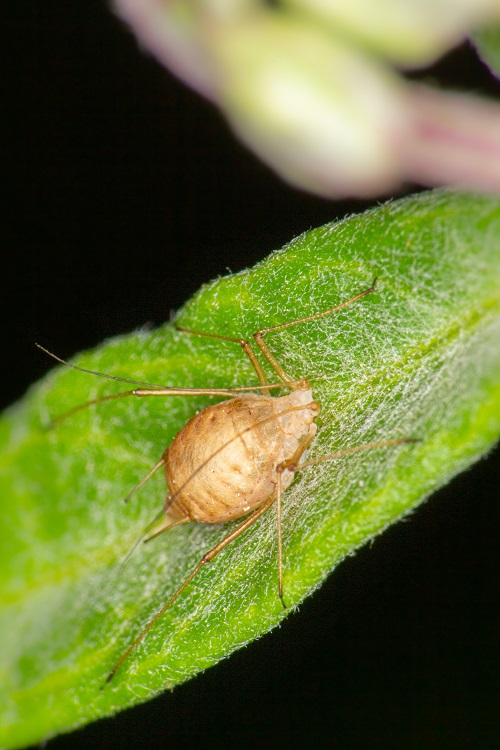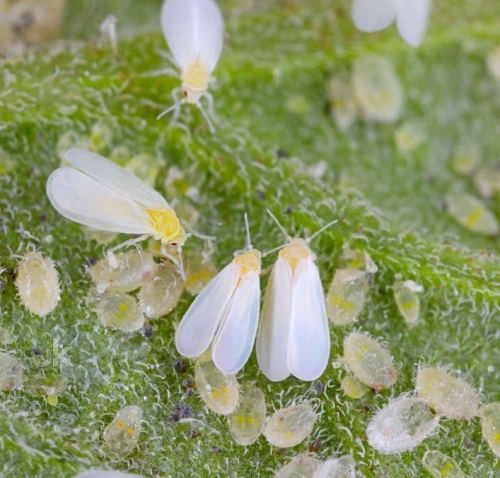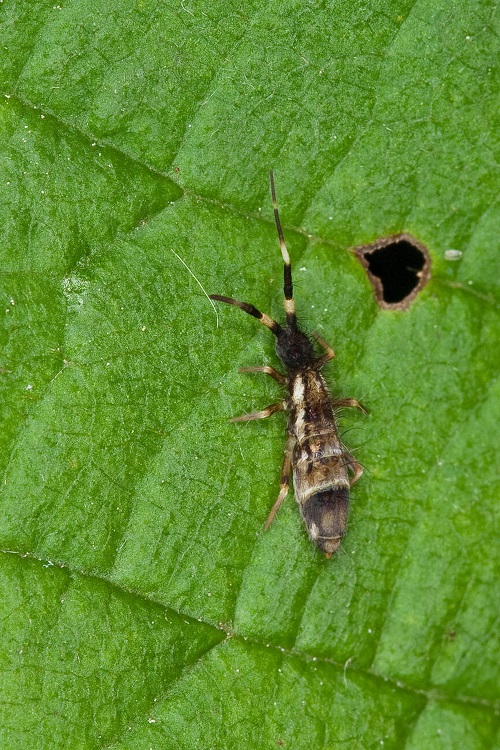What’s killing your Christmas Cactus? Before holidays arrive, tackle these Common Pests and Learn How to Get Rid of Them!
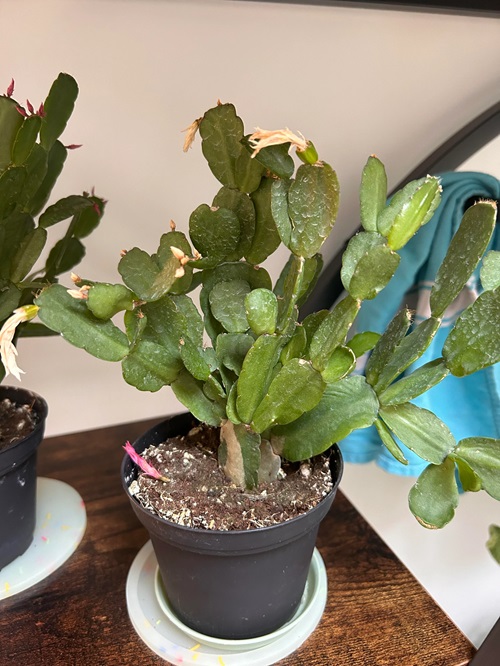
Schlumbergera is a beautiful houseplant that brings oodles of festive joy with its stunning pink and red flowers! However, this cascading succulent is vulnerable to a host of intruders. Here’s how to get rid of these common Christmas cactus pests well before bloom season!
Most Common Christmas Cactus Pests
1. Mealybugs
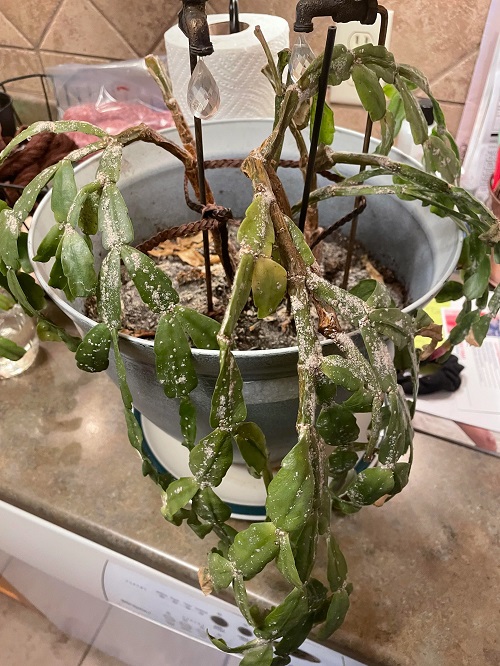
Scientific Name: Pseudococcidae species
Mealybugs are among the most common pests found on Christmas cactus, especially if conditions are too humid and warm. These pests appear as small, white, fluffy masses that move along the foliage or stems.
As a mealybug infestation worsens, the leaves may turn brown or dark, eventually leading to leaf drop. To prevent this issue, isolate the plant from other vulnerable neighbors and provide ample room for air circulation.
Apply neem oil to the plant in the evening and keep it in the shade for a few days. Once the mealybugs are gone, return the plant to its usual spot. A crucial preventive step is to check for early signs of infestation regularly.
2. Fungus Gnats
Scientific Name: Lycoriella species
Fungus gnats thrive in soil and potting mediums rich in damp organic matter. They resemble fruit flies and gradually damage the plant by turning the stem segments yellow, which eventually dries up and kills the plant.
Ensure proper drainage and avoid overwatering. Use a high-quality potting medium and sticky traps to catch adult gnats. If the infestation is severe, excavate the plant and wash the roots and the pot. Then, repot with fresh medium and top it with fungicide.
3. Root Mealybugs
Scientific Name: Rhizoecus species
Root mealybugs infest the roots of plants in moist and warm soil. They form a white, waxy layer on the soil surface. If untreated, these pests can kill the plant by sucking out its nutrients. Avoid overwatering to prevent root mealybugs from thriving.
If affected, dig up the plant, clean the roots with sterile water, and dip the plant in a mild detergent solution for 5-10 minutes. Then, repot in fresh soil. Check out these additional ways to use detergent in your garden.
4. Aphids
Scientific Name: Aphidoidea species
Aphids are small, pear-shaped insects that feed on new leaves. They leave behind a sticky substance called honeydew, which attracts other insects. This can lead to further infestations and diseases.
Use Epsom salt in the soil and apply insecticides during humid weather. Spray the plant with neem oil or detergent spray. Remove any remaining aphid eggs using 70% alcohol or sanitizer on a cotton swab.
5. Whiteflies
Scientific Name: Aleyrodidae species
Whiteflies are small insects slightly different than mealybugs. They resemble tiny moth eggs found on the undersides of the leaves. These common indoor pests will suck the life out of your Christmas cactus and secrete a sticky honeydew—all bad news for your plant!
To get rid of this pest, isolate the affected plant for a 2-3 weeks and apply neem oil spray. If the infestation is immense, wash it in the sink or use a small handheld vacuum to remove the eggs and trap the flies with protected hands. Here are a few more ways to kill whiteflies.
6. Scale Insects
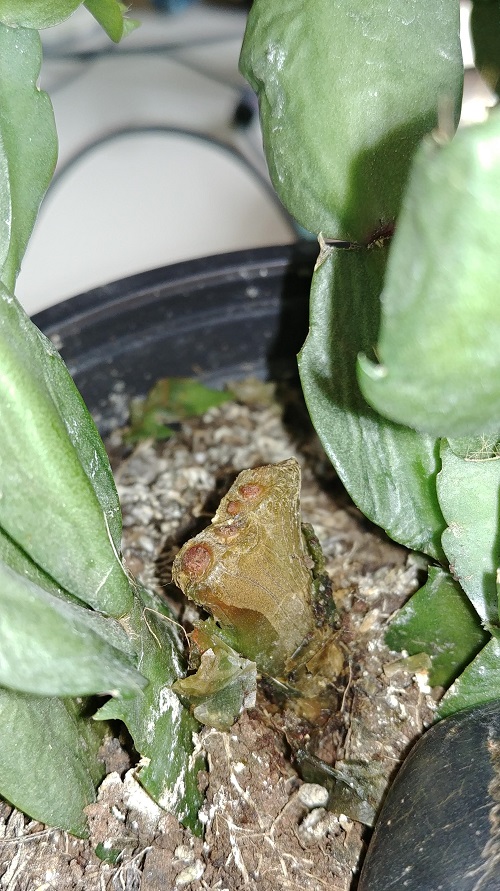
Scientific Name: Coccoidea
Scale insects flourish in warm weather. If your large Christmas cactus was outside during summer, keep an eye on it for a few weeks after bringing it indoors. These critters gather in large numbers and cling to the plant until they fully damage it.
To control scales, remove damaged plant parts, and use neem oil or a powerful insecticide to prevent further spread. Here’s the best way to use neem oil on your plants.
7. Thrips
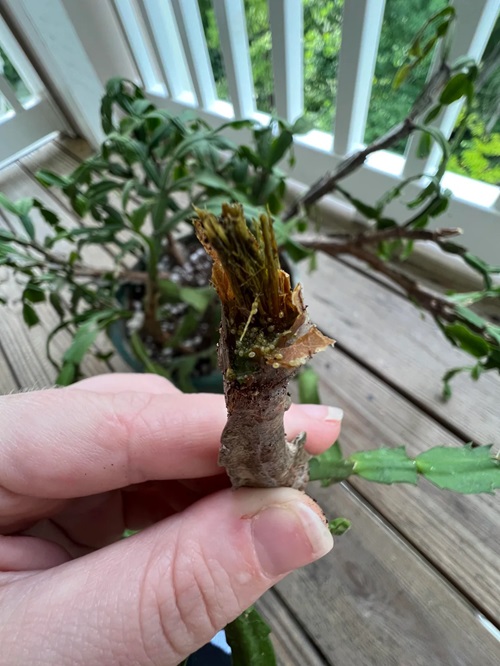
Scientific Name: Thysanoptera
Thrips jump plants with speed and efficiency! Before you know it, your entire vegetation is infested. And they are super hard to detect with the naked eye! To catch them before they wreak havoc, look for a shiny, silver-like coating on your holiday cactus foliage.
Sticky traps and good gardening habits can help you win this thrip race. DIY insecticidal soaps are effective at getting rid of thrips indoors. Follow the instructions carefully and prune any infested leaves to prevent the problem from spreading.
8. Springtails
Scientific Name: Collembola
Springtails are tiny pests that like moisture and warmth. They are mostly seen in bathroom plants or on overwatered soil. Although less dangerous than the ones above, springtails will eventually cause fungal diseases and root rot.
If you find dark brown, black, or white insects about 1/8th inch long, you’ve got a problem. Pull back on watering, let your Christmas cactus dry out, and manually pick these pests and get rid of them.
9. Spider mites
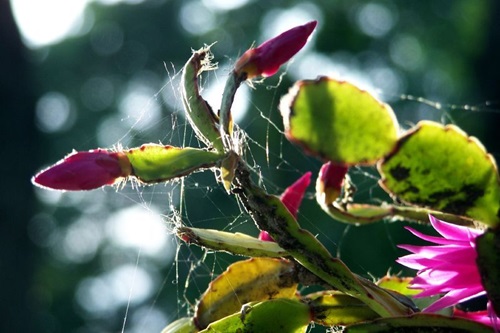
Scientific Name: Tetranychidae
Spider mites are tiny insects that look like small spiders with eight legs. Female spider mites have black spots on their backs. They can appear anytime, either when bringing the plants indoors or when they jump between houseplants.
The first sign of spider mites on your Christmas cactus is yellow spots on the leaves. If left unchecked, this gets worse; the leaves turn brown, and then the plant dies. Regularly dust or rinse your plants to control spider mites, and use neem oil to tackle them.
Once you’ve dealt with these common Christmas cactus pests, here’s how to make your holiday succulent bloom during Christmas!




